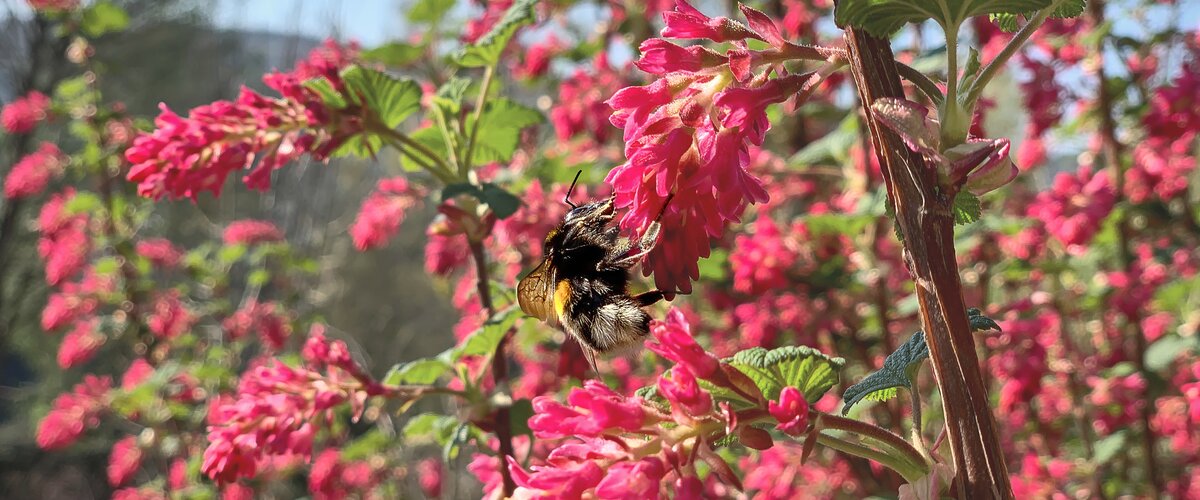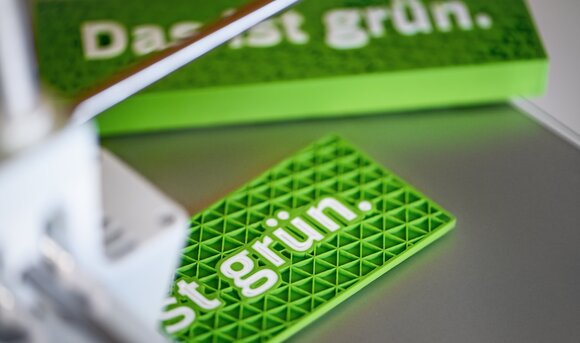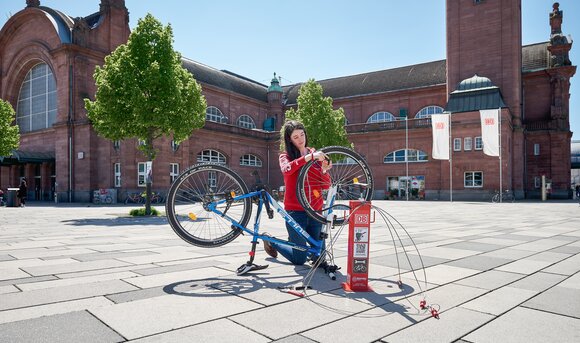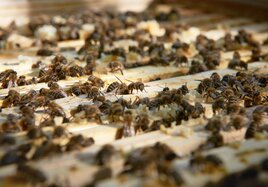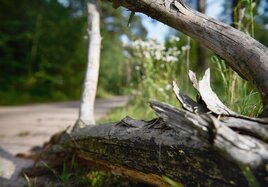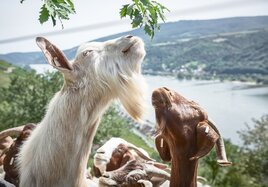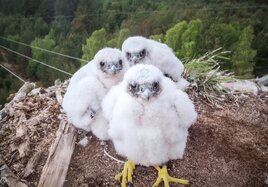Insects are an important part of the balance of nature. This makes it all the more alarming that their numbers have declined by up to 80 percent over the past 30 years. Deutsche Bahn wants to do something about this. Throughout Germany, DB is converting as many of her areas as possible into biotopes. Like this, DB wants to contribute to nature and species conservation so that endangered species such as bees, bumblebees and butterflies can find food and shelter all year round.
DB is paving the way for sustainable management of own land through voluntary initiatives. For example, DB sows flowering meadows, plants native and climate-resilient shrubs and trees and builds wild corners as nesting sites for wild bees. Together with dedicated employees, facilities are rededicated, and new valuable habitats are created.
Green lighthouses for more biodiversity
On the grounds of our signal box in Delmenhorst, for example, a special biotope over an area of 5,000 square meters was created. Here, the old gravel surface was reprocessed with recycled play sand and transformed into a nutrient-poor meadow, which is almost impossible to find in today's landscape. The drier and more nutrient-poor such sites are, the more likely it is that grasshoppers and rare plants, for example, will colonize them. More than 300 native trees and shrubs were also planted on the disused tracks, and deadwood hedges and bat boxes were installed.
The area was designed and implemented by employees on site in collaboration with a Bremen planning office for gardening and landscaping. The project is also supported by NABU Delmenhorst, the Society for the Promotion of Regenerative Microorganisms and the Nature Garden Association.
In another pilot project, for example, a meadow of wildflowers was sown on an area at the vehicle maintenance plant in Nuremberg and gravel turf was laid out on an area of around 1,000 square meters at the Kaiserbahnhof in Potsdam.
New biotopes do not always have to be newly created. As a landowner, Deutsche Bahn owns land on which valuable biotopes already exist and is committed to preserving them. Near Niesky, rare and protected orchids such as the spotted orchid, the broad-leaved march orchid and the common twayblade bloom on more than 1,000 square meters. On behalf of DB Immobilien, colleagues from DB Fahrwegdienste maintain the species-rich meadow in a sustainable way by mowing the area twice a year. In summer, around 10–20 percent of the orchid area is left unmown to ensure that the plants can reproduce. In addition, numerous insects, such as grasshoppers, find shelter in these unmown areas. The cut material is removed after mowing to prevent nutrient accumulation. This preserves the valuable character of the meadow.
DB laid the foundation for the sustainable design of her own green properties with various partners as part of the EU-wide LIFE BoogiBOP project, which was completed in 2022.
In future, DB is also planning biotope areas at other DB sites and wants to make a sustainable contribution to nature and species conservation.
